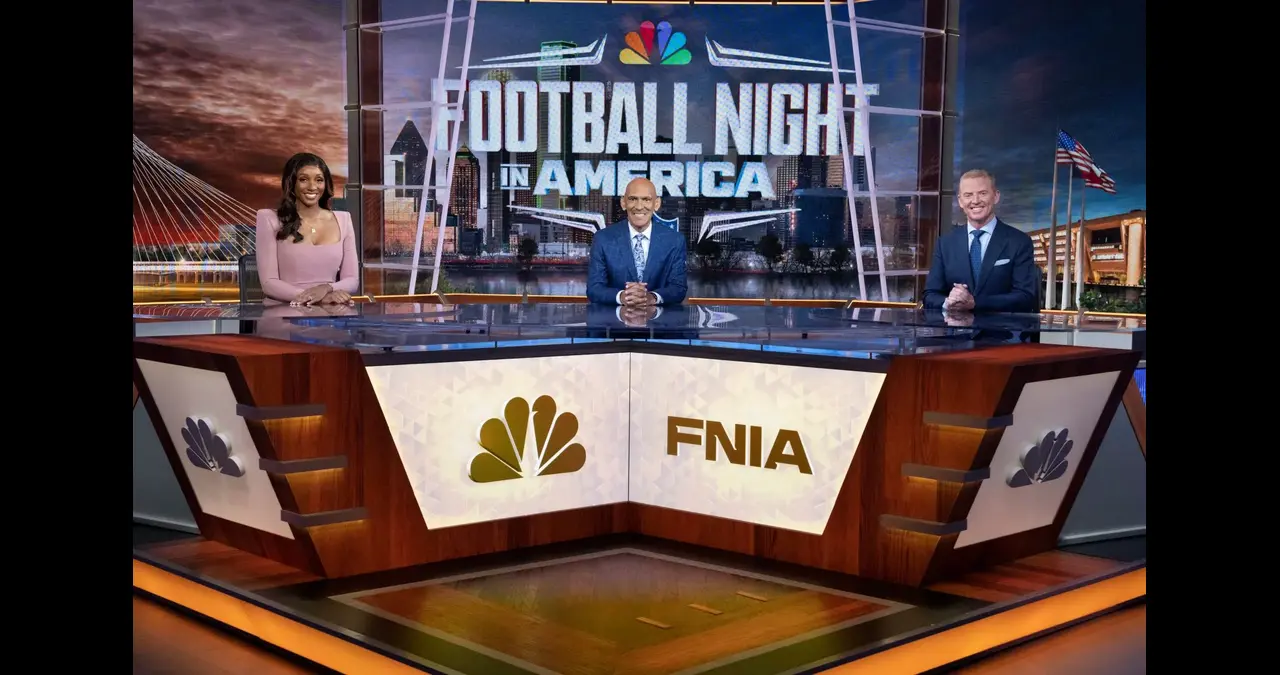Football Night in America Hosts bring expertise, humor, and chemistry to make every weekend gathering a celebration. As the heartbeat of the game day experience, they offer more than commentary—they set the mood, stir excitement, and guide audiences through every story on the field and beyond. This article explores the dynamic world of Football Night in America hosts, their roles, personalities, and what makes them essential to the iconic experience.
Origins and Evolution of the Broadcast Team
The story of the Football Night in America hosts begins with a desire to create a companion experience around game day television. Originally designed to offer insights during breaks and between matchups, the broadcast team has evolved into a weekend tradition. Over time, this group of professionals has become a cast of characters, each bringing something unique to the table.
Early on, the hosts were more formal, focusing heavily on analysis. But as the audience matured, the format adapted. Hosts began weaving in entertainment, lighthearted exchanges, and behind‑the‑scenes stories. It transformed from a straightforward sports preview into a television event in its own right. The current hosts follow in those footsteps by blending prediction, commentary, and camaraderie in a way that makes viewers feel like they’re part of a circle of friends.
As the seasons pass, new talent joins, some established names move on, and others find their rhythm on the desk. Through it all, the common thread is professionalism tempered with friendly banter. That identity keeps the show feeling fresh while rooted in its respected heritage.
Core Responsibilities of Football Night in America Hosts
Football Night in America hosts carry a wealth of responsibilities beyond simply filling airtime. Before a single camera rolls, these professionals spend hours preparing. They analyze matchups, watch practice footage, and digest reports. They stay informed of injuries, training developments, and even weather conditions. This research forms the backbone of compelling, accurate commentary.
Once on air, they guide viewers through the transitions between live games. They map out narratives, highlight key players, and offer informed predictions. During breaks, they recap pivotal moments, revise predictions, and maintain the energy in the studio. When a game goes into sudden drama, it’s the hosts who quickly pivot, delivering insight and emotion in equal measure.
They also interface with analysts and correspondents, directing discussion while managing airtime. When special segments appear—such as interviews, human interest features, or tactical breakdowns—it’s the hosts who introduce them, set them up, and return the focus to the game. Their voice is the thread tying the entire broadcast together.
Chemistry and Camaraderie on Set
One of the most captivating aspects of the show is the genuine camaraderie among the hosts. It feels organic, whether they’re celebrating big plays, debating strategy, or sharing playful jabs. Viewers tune in not just for the analysis, but for that human connection.
That chemistry doesn’t happen by accident. It’s cultivated through off‑air rehearsals, honest conversations, and mutual respect. Even when disagreements arise, there’s an underlying tone of friendly rivalry rather than hostility. The result is television that feels like a conversation among close friends—energizing, relatable, and fun to watch.
Audiences respond to authenticity. When laughter bubbles up, it’s because chemistry is real, when a serious topic demands attention, that same synergy supports measured, heartfelt responses. The hosts know when to tease, when to debate, and when to reflect. That flexibility helps maintain pacing and keeps viewers engaged throughout the night.
Spotlight on Notable Personalities
Throughout the show’s lifespan, certain hosts have become staples of the broadcast, earning recognition for their style and contributions. While all hosts bring something special, a few stand out for distinctive traits and impact.
One standout is the friendly facilitator who holds things together. They make sure everyone has their say, ask probing questions of analysts, and balance humor with insight. They’re the anchor—the reassuring voice viewers trust to guide them through the evening.
Then there’s the fiery prognosticator. Their debates spark attention, sometimes drawing laughter for bold claims or earning respect for well‑reasoned insights. Their presence ensures every discussion crackles with energy.
Another personality often shines through heartfelt storytelling. Whether recounting a player’s journey or spotlighting a small‑town team overcoming adversity, their empathy adds emotional resonance. They remind viewers of the human dimension behind every game.
The ensemble feels like a carefully balanced cast—each personality complementing the others. Together, they create the distinct identity and enduring charm of the broadcast.
The Art of Pre‑Game Hype
The hours before kickoff demand a delicate blend of gravitas and excitement. Hosts set the tone by building anticipation—without overselling the moment or dulling suspense.
They do this by mixing statistical insight with narrative elements. A team’s unbeaten run isn’t just a number: hosts explore what that line reflects—a culture of resilience, a standout player, a transformative coaching approach. They spotlight matchups that matter, not just by position, but by storyline: veteran quarterback against the emerging defense, divisional pride on the line, or generational talent debuting under Sunday lights.
The goal is to engage both the die-hard fan and the casual viewer. Analysts may break down formation schematics, but the hosts frame it in accessible terms, weaving in colorful language and memorable metaphors. It’s this balance of intellect and entertainment that builds momentum without crossing into hype oversaturation.
When the whistle blows, audiences are primed—not jaded. They’re eager, informed, and ready to invest emotionally in every play.
In‑Game Breakdowns and Live Integration
Once the games are underway, the role of hosts doesn’t diminish. They continue weaving narratives, updating viewers on shifting storylines, and coordinating with field reporters. When a key event happens—an unexpected turnover, a surprise play—they bring analysis teams into the discussion, ask hard questions, and keep things moving.
Live updates—clock status, timeouts, momentum swings—are relayed smoothly, with rhythm and a sense of pacing. The brightness of the stage lighting contrasts with the tense drama on screen, but hosts know how to adjust the tone accordingly. They deliver energy when games swing back and forth, and allow solemn reflection when moments demand respect, like significant career milestones or emotional aftermaths.
They are the linchpins between fast-paced action and thoughtful commentary. For viewers tuning in on the couch, that connection is what prevents feeling disjointed. Instead, the show feels like one unfolding story, with hosts as narrators keeping sight of the big picture.
Post‑Game Reflections and Analysis
When the final whistle blows, the show enters reflection mode. Hosts lead the charge with debriefs rich in emotion, technical insight, and human detail.
They begin by celebrating the victors, highlighting how strategy, execution, and individual brilliance combined. But they’re careful to avoid glossing over tough losses. Instead of dwelling on failure, they provide context: Was it fatigue? Was the opponent simply better? Were there injuries that tipped the balance?
They offer a stage for quick interviews with players and coaches and segue into extended analysis by experts. All the while, hosts keep transitions smooth, introduce clips thoughtfully, and summarize main takeaways in accessible language.
At this point, the candid side often emerges. A bemused grin at a weird blunder, a nod to a miracle play. They let personalities shine again while keeping respect front and center.
Then they wrap up—shifting attention to the Football Night in America Hosts ahead, lingering questions to keep viewers talking, and teasers about what’s next week. It creates anticipation without overshadowing the evening’s results.

Adapting to New Technologies and Audience Behavior
The world of sports broadcasting is changing fast, and the Football Night in America hosts are evolving right along with it. As streaming platforms and second‑screen habits grow, hosts tailor segments for digital audiences. Shorter highlight reels, social-media-friendly breakdowns, and interactive polls—all become part of their playbook.
Behind the scenes, producers watch audience data in real-time. If a certain segment gains traction online, hosts adjust pacing to spotlight similar stories. Rapid‑fire Q&A sessions with analysts happen in tandem with broadcast, in some cases in split‑screen setups.
The hosts have also embraced remote collaboration. When unforeseen circumstances arise, or creative segments involve guests in distant locations, they pivot without losing connection. The key lies in preparation and presence—even through satellite feeds, their rapport feels natural.
At its core, their mission remains unchanged: to forge connections, illuminate the game, and entertain—but they’re doing it through new channels and formats.
Audience Engagement and the Community
A signature strength of the broadcast team is its relationship with the viewership. Hosts frequently highlight viewer feedback—fan clips, social media posts, and opinions from around the country. This creates a sense of shared experience, reminding audiences they’re part of something larger than a single living room.
Mailbags, tweet‑driven discussions, and in‑studio fan appearances keep fans visible. The hosts’ empathy and curiosity invite participation. When someone’s hometown team beats a powerhouse, that voice is amplified.
That inclusivity matters. It transforms passive watching into active engagement. It helps fans feel seen and heard. It gives the show purpose beyond commentary, bridging the divide between television and community.
Challenges and High‑Pressure Moments
Despite the upbeat tone, hosting high‑profile live programming carries risk. Hosts must handle controversial statements, emotional reactions, and sudden technological glitches with poise.
They prepare for awkward silences, but more importantly, for the unexpected. Injuries, protests, or emotional outbursts require sensitivity and judgment. Hosts know when to speak, when to pause, and when to ask a relevant question. Those instincts are honed through experience but backed by quick judgment and empathy.
During technical difficulties—camera issues, audio lapses—they adapt. They fill airtime smartly, keep the mood intact, and reassure viewers that the show is intact even if the feed falters.
That resilience is part of what makes them professionals. Viewers may not always notice a seamless resolution, but they feel the stability.
How Hosts Prepare Behind the Scenes
A live broadcast is magic, but that magic takes preparation. Hosts spend days—sometimes longer—reading scouting reports, reviewing game tape, and meeting with production teams.
They get coached on phrasing, transitions, and even wardrobe. Makeup and lighting are part of the process. Then, there are rehearsals: running through intros, walking through segment timing, and planning how they’ll respond to field reporters.
They work closely with analysts to coordinate key talking points, ensuring expert commentary fits into the pacing. And they study social trends so they can highlight what fans are buzzing about online.
Behind the comfortable banter on screen is a meticulous choreography of research, rehearsal, and collaboration.
The Impact of Strong Hosting on Broadcast Success
It’s easy to underestimate how critical hosts are to a show’s success. Without compelling voices to tie it together, even amazing game content can feel disjointed or sterile.
Strong hosts elevate everything. They showcase what makes each game special—whether technical brilliance or emotional drama—while giving viewers a framework to process what they see. They determine flow, tone, and pacing.
Moreover, hosts help build brand loyalty. Week after week, viewers grow more familiar with their wit, their insights, and their style. That familiarity fosters trust. It keeps audiences returning. Broadcasts become an appointment, not just entertainment.
Future Directions for Hosting
As technology and audience habits evolve, so too will the role of Football Night in America hosts. Virtual reality, immersive graphics, and AI‑enabled insights offer new stitching points. Hosts may soon narrate segments while wearing AR‑enhanced gear, or field real‑time data visualizations on screen.
They’ll continue to expand digital content—podcasts, short‑form interviews, behind‑the‑scenes footage—to meet viewers wherever they are. Host personalities will need agility, familiarity with emerging mediums, and connection with the digital culture.
Above all, their core mission remains: to make football feel immediate, personal, and enriching. As the game transforms, these hosts will transform with it, keeping the human connection at the heart of every broadcast.
Quick Bio Table of Key Host Personalities
| HostStyle | StrengthsMemorable Moments |
| Lead Moderator | Smooth transitions, bridging analysis, and fun Handling live tone shift during pivotal injuries |
| Debate Specialist | Bold takes spirited exchanges That one fiery exchange over quarter calls. |
| Empathic Storyteller | Storyteller Heartfelt human‑interest narratives Emotional tribute packages on milestone games |
| Statistical Guru | Deep dives, analytical breakdowns Explaining advanced metrics during top matchups |
Frequently Asked Questions
What makes Football Night in America hosts stand out?
They combine thorough preparation, natural chemistry, and a deep love of the game. Their ability to blend insight with entertainment keeps audiences engaged beyond the live action itself.
How do the hosts prepare for each broadcast?
They study game data, watch films, plan segments with producers, pressure‑test transitions, coordinate with analysts, and pay attention to fan conversations across platforms.
Do hosts handle controversial topics on air?
Yes. Whether it’s off‑field controversies or on‑field conduct issues, hosts are trained to respond thoughtfully, maintain balance, and guide respectful conversation.
How has social media changed hosting?
It’s made hosting more interactive. Hosts often feature viewer messages, highlight viral content, and tailor some commentary to reflect what fans are saying online.
Will technology replace human hosts?
While AI and advanced graphics offer support, viewers still crave the humanity, wit, and judgment that only real people bring. The hosts’ voice, empathy, and chemistry remain irreplaceable.
Conclusion
At the core of the broadcast experience are the hosts. They’re well‑prepared pros who bring insight and humor, weaving together live action, expert analysis, and emotional resonance. Their chemistry and adaptability keep the show vibrant and audience‑focused. Whether narrating a miraculous comeback or dissecting a game plan, they create the moments viewers remember long after the final whistle.
The legacy of Football Night in America hosts lies in their ability to honor tradition while evolving with the times. As the game grows more connected, immersive, and global, their voice will keep audiences at home united—sharing laughter, insight, and the thrill of the game.



